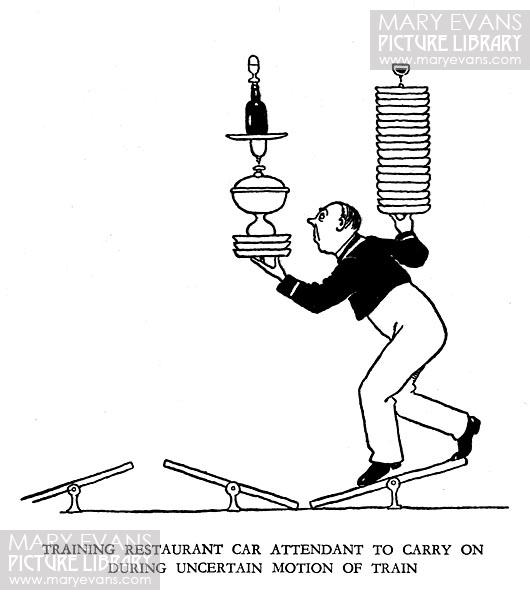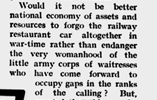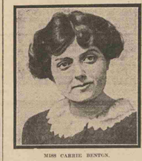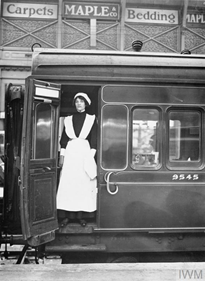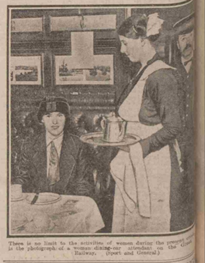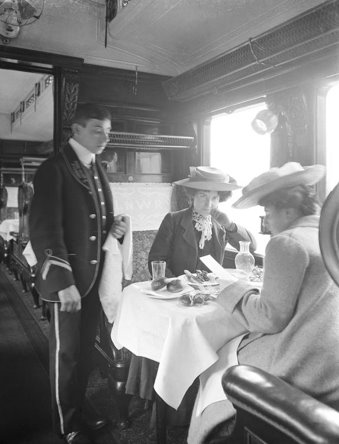1/15 Hi I& #39;m Chloe and my @CDPConnect PhD project is & #39;Eating on the Go& #39;: Cultures of Consumption on the Railways in Britain,1880-1948 partnered with @railwaymuseum and @UniStrathclyde. My thread for the #NTiHoR Conference is on Female dining car attendants in the First World War
2/15 Women have been present in railway work from its beginnings, particularly in positions that were considered more feminine such as refreshment room or cleaning attendants. Yet when we think of railway work, it is still seen as a particularly male narrative. #NTiHoR
3/15 However, as the First World War began, there was a need for women to take up traditionally male professions. In Manchester when a meeting was held to discuss these changes the Mayor stated . ‘What we want, are men for the trenches and women for the benches.” #NTiHoR
4/15 This slogan was used to inspire men and women to contribute to the war effort. Men were needed for the trenches at the frontline and to allow them to leave their jobs, women were to take their place on the & #39;benches& #39;. One of these jobs were dining car attendants #NTiHoR
5/15 A dining car attendant& #39;s job were similar to a waiter& #39;s. To provide refreshment and table service for travellers on the railways. The main and most obvious difference and challenge was that they served meals whilst the dining car was moving at top speeds #NTiHoR
6/15 Unlike other roles in railway catering, dining car attendants were seen as a man& #39;s job. Mr. Foster an L.M.S. manager stated how & #39;unsatisfactory women& #39; were as dining car attendants because they did not have the skill needed to carry plates whilst the train was moving #NTiHoR
7/15 Others also feared how women would cope in & #39;men& #39;s jobs& #39;. One author wrote ‘Are they unfitting themselves for home life, losing sense of perspective of true domestic happiness, and to a greater or lesser extent ruining themselves for wifehood and for motherhood?& #39; #NTiHoR
8/15 Despite the negativity, some supported women becoming dining car attendants. In the U.S. prior to WW1, a Miss Carrie Benton, & #39;a plucky girl& #39; had been hired on the Cincinnati, Hamilton and Dayton railway and travellers flocked to her department of the train. #NTiHoR
9/15 Miss Benton& #39;s success made its way to Britain, and some reflected on whether women would make good dining car attendants. Concluding that if the & #39;right sort of girl& #39; could be found it would be a success. #NTiHoR
10/15 As WW1 progressed, women were hired as dining car attendants and given the opportunity to prove they were capable of doing a man’s job. Here are photographs from @I_W_M and the Daily Record, showing female dining car attendants. #NTiHoR
11/15 Nevertheless, not every woman had the opportunity to prove herself in a traditionally male job. Those of the leisure class were given first priority and those already in work could not use this opportunity to gain advanced employment. #NTiHoR
12/15 A Mrs Thomas stated that ‘the most highly educated woman would wait in a restaurant car better than a less educated woman because she knew how to use her brains.’ Dining car attendants were expected not just to serve food, but to facilitate the luxury experience. #NTiHoR
13/15 Therefore they needed to be knowledgeable about luxury foods and to have good manners to create this experience. Only upper and middle class women would have been able to both afford time and money for this education. #NTiHoR
14/15 Consequently, although women’s war work contributed towards women’s suffrage, and created a chance to show that women could have a place in a men’s dominated world of work, class divisions were emphasised and exploited to prioritise upper- and middle-class women. #NTiHoR
15/15 Therefore working-class women were excluded from the prospect to train in higher-skilled jobs, both due to their inferior class and their lack of education. A problem we still face today. Thanks for reading. #NTiHoR

 Read on Twitter
Read on Twitter